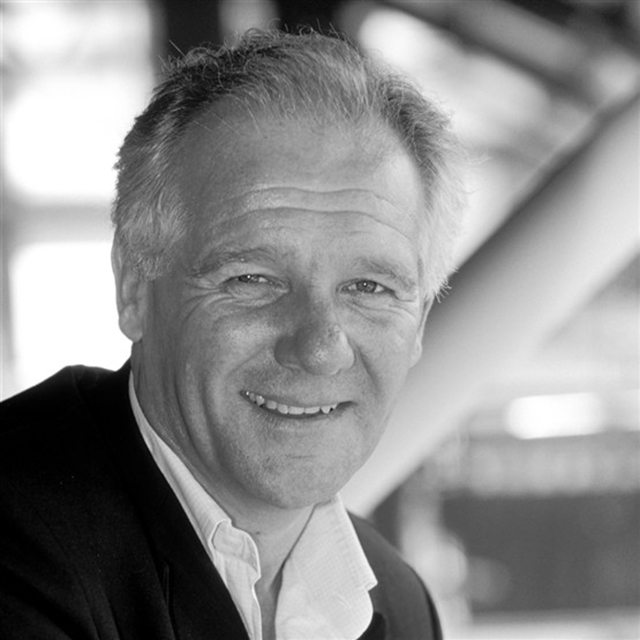Ed Dubois was a good friend of Practical Boat Owner magazine contributor Peter K Poland and this was probably the last and most up-to-date profile on him. As published in the February 2016 issue of PBO.
Still done by eye

Windy SR52 Blackbird, a fast chase boat for superyachts
Unlike many of his peers, Dubois draws the initial lines for every design by hand.
‘You can put your head down low and see the lines this way,’ he told me.
These are then digitised and loaded into computers for performance analysis and detail, and construction design.
‘It’s all about harmony of line – the human eye sees this better than a machine. Aesthetics count. And the arrival at a shape that goes through the water best comes from instinct as well as from analysis.’
Then, when the hull design is finalised, a scale model is tank-tested at Southampton’s Wolfson Unit for Marine Technology and Industrial Aerodynamics. Nothing is left to chance.
Despite his success in the superyacht world, however, Dubois still enjoys designing production boats, both power and sail.
He told me: ‘For the Norwegian motorboat company Windy, we designed the 11.9m (39ft) Camira and the 2011-built SR52 – a fast chase boat for sailing superyachts. This is also now sold as a multipurpose vessel.
‘So far they have built approximately 20 of these stunning craft, driven by three Volvo pod drives. Windy has now contracted us to design an SR42 – a somewhat smaller version of the successful 52.
‘We have also designed a range of their smaller boats marketed under the Draco brand name – a 27 and a 22.’

Draco 27RS, available second-hand from £67,000
On the sailboat front, Dubois applied his superyacht skills to designing the largest Oyster models ever built – the 100 and 125. He also designed some attractive upmarket Southerly cruisers. The Southerly 535 and 57RS, both gorgeous-looking yachts, brought real class and style to the top of this range.
Sadly, however, few were launched before the builders Northshore Yachts folded and ceased production.
Dubois’ interest in production designs is clear. ‘It’s now our intention to offer our services to other production boat companies – sail and power,’ he told me.
‘We have a lot to offer with our experience in hull design and ideas for styling, layout etc.’
The way forward
This prompted me to ask what Dubois thinks of modern production yacht designs in general.
‘I think they show great variety and some of them are exciting and successful. Rather like motor cars, they seem to get bigger and bigger (beam and freeboard) for a given number of passengers/crew. I guess that’s the way the market goes. Some of them are quite extreme.
‘A big part of design is the skill of balancing the various elements, which all have to work together, to get to the right function-to-purpose factor.
‘Hence a very wide stern, for example, is good providing it doesn’t make the boat unbalanced going to windward in a lot of breeze – which can sometimes happen with designs that are fine forward, unless you have heavy crew sitting on the aft weather rail.
‘A wide-stern boat needn’t be unbalanced without this crew weight providing the lines are compensated for by fuller sections forward.
‘A yacht designer has to know his onions when it comes to hull form and volume distribution. In my opinion this only comes from successful racing yacht designers who have studied their own work, first hand, by sitting on the rail for hours, weeks and, if you add it all up, years, trying to win (and winning) major offshore races around the world.
‘That’s what I did in the ’70s, ’80s and into the ’90s. It’s indispensable. If I were a client for a cruising yacht, I would only go to a successful racing-yacht designer who had also designed beautiful cruising yachts.
‘The key is to identify the true purpose of the yacht and that can only be achieved by understanding the client and what he wants. This is the same with a private individual or a production boat company. Like most things in life, success is born out of good communication.’
Still sailing

Firebrand, Ed Dubois’ 1965 yacht which he bought in 1998
And what does Dubois own and sail himself? ‘I sail my lovely yacht Firebrand, which I bought in 1998. She lives during the summer on a mooring on the Beaulieu River and I can see her from my bathroom window when I shave each morning!’
Firebrand is a classic 1965 S&S-designed Admiral’s Cupper, a yacht that, not surprisingly, combines beauty with performance.
‘I’ve sailed Firebrand in the Cowes to St Malo race many times, to Scotland and all over the English Channel, Brittany and up the East Coast as far as the Deben. This 43ft Sparkman & Stephens design is a wonderful boat in that she’s stiff – 48% ballast ratio, 7ft draught and 10.7 tonne displacement – and can be sailed single-handed if you think ahead. She’s powerful enough and totally seaworthy so that you can take her anywhere in the world if you wanted to. She also looks very pretty! One of the best things I have ever done is buy Firebrand.’
She’s a classic 1960s example of Dubois’ current thinking. He told me: ‘It’s vital to get the various ingredients of the design in the right proportion and balance with the right hull form, right construction for the purpose, right layout etc.
‘It’s then vital to make any yacht look pretty. This is where the art side of design comes in – to marry beauty with technical excellence. That’s always been my philosophy.’
ABOUT THE AUTHOR

Peter K Poland crossed the Atlantic in a 7.6m (25ft) Wind Elf in 1968 and later spent 30 years as co-owner of Hunter Boats. He is now a freelance journalist and PR consultant.
Tributes pour in for yacht designer Ed Dubois
From Westerlys to superyachts, with plenty in between, the career of designer Ed Dubois has been spectacular.
New boats at the Southampton Boat Show
Many established names have new models that can be seen at the Southampton Boat Show
Tributes paid to yacht designer Mike Pocock
Tributes paid to Mike Pocock, long-distance cruiser, yacht designer, and former OCC Commodore, who has passed away.
Britain’s influential yacht designer David Thomas has died
Tributes are pouring in for the UK's most prolific keel boat designer
Ben Ainslie’s new boat T2: ‘A fighter jet on water’
T2 - Ben Ainslie's latest test boat - will fly on foils the size of a wakeboard, whilst lifting the…
Tributes paid to tragic yachtsman Roger Pratt
Condolences paid to Margaret Pratt after her husband is killed after robbers boarded their yacht in the Caribbean
Tribute to Hunter Boats co-founder Warren Luhrs
The 69-year-old died suddenly of a heart attack last month
Tributes pour in for Andrew Simpson following America’s Cup training tragedy
The Olympic gold and silver medallist has died at the age of 36












